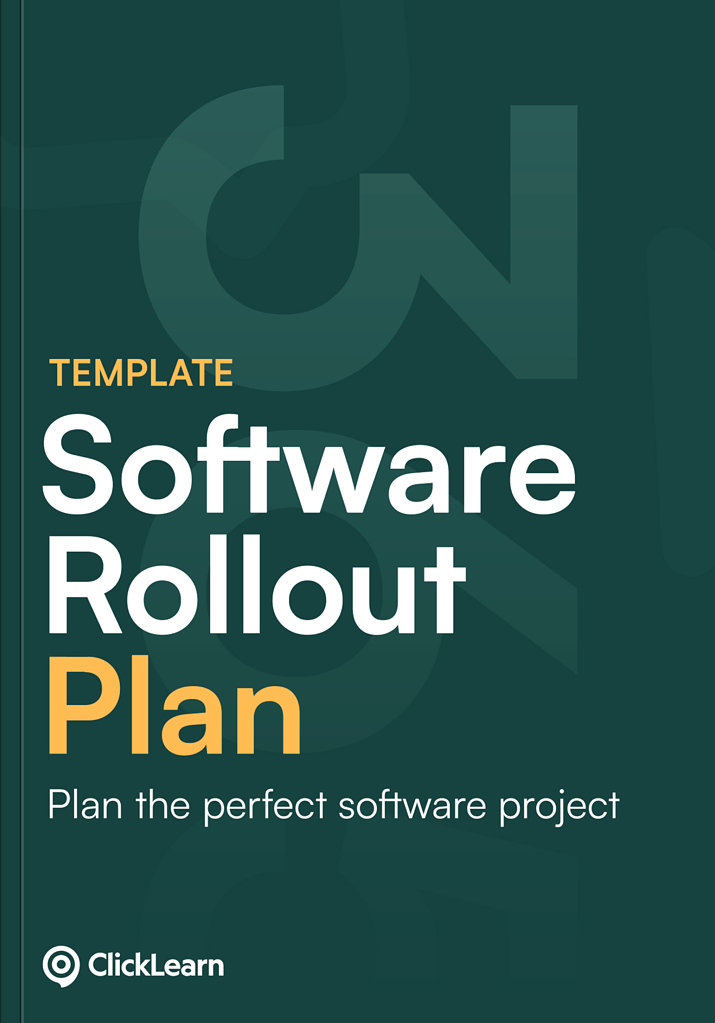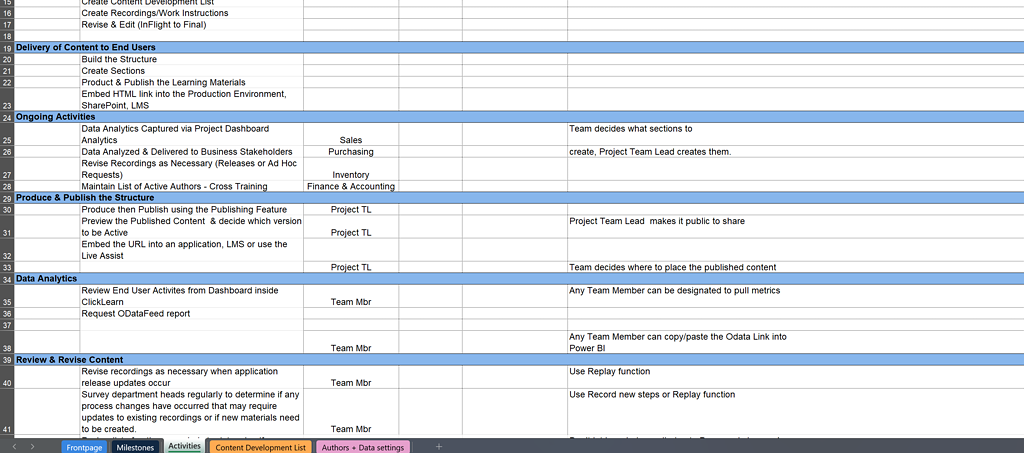Take control of your IFS implementation
Free template: IFS Software Rollout Plan
Plan and execute a smooth IFS Cloud or IFS Applications deployment with our ready-to-use rollout plan template.
Rolling out IFS software — whether it’s IFS Cloud, IFS ERP, or IFS Field Service Management — requires strategic planning, clear communication, and focused execution. This IFS software rollout plan template helps you break your project into actionable phases, align your team, and set your implementation up for long-term success.
Ideal for manufacturing, service, or asset-intensive industries, this tool is built to support your unique IFS rollout journey.

- Expert-designed Oracle template
This rollout plan was developed by software implementation expert Christine Eltz and is grounded in years of experience managing complex enterprise projects — including IFS deployments.
- Trusted by professionals
Whether you’re implementing IFS Cloud ERP to manage operations or deploying IFS Field Service Management across service teams, this template offers a proven framework for success.
- Immediate access
Get immediate access to your IFS rollout plan — no delays, no friction. Start planning today and gain full control over your implementation process.



Great companies use ClickLearn
Best practices for a smooth IFS software rollout
A successful IFS software rollout plan combines technical precision with stakeholder alignment and change management. These best practices can help guide your path to a seamless deployment:
Define a detailed implementation roadmap: Break your rollout into clear stages like discovery, system design, pilot launch, user onboarding, and full go-live.
Engage key departments early: In IFS projects, cross-functional teams (operations, finance, asset management, and field service) must be involved from the start to align priorities and workflows.
Leverage IFS lifecycle tools: Take advantage of tools within IFS Cloud for testing, data management, and process configuration before rolling out organization-wide.
Provide role-based training: Whether for planners, technicians, or executives, deliver training tailored to the needs and responsibilities of each user group.
Establish KPIs and track progress: Monitor metrics like schedule adherence, data migration accuracy, and user adoption to guide post-launch optimization.
The role of feedback in an IFS rollout
Your IFS software rollout plan isn’t complete without a strong feedback loop. IFS solutions often affect a wide range of departments, and feedback helps identify what’s working and where improvements are needed.
Here’s how to put feedback to work:
Set up open communication channels
Allow users to report pain points or request improvements via surveys, team meetings, or feedback tools within the IFS environment.Use pilot feedback to refine configurations
Before going live across all departments, test the solution in a controlled environment and use insights to adjust processes and data models.Demonstrate responsiveness
Share how feedback has influenced rollout changes — this builds trust, improves morale, and encourages ongoing participation.

How to create an IFS rollout plan
A structured rollout plan ensures your IFS deployment is scalable, sustainable, and aligned with business goals. Here’s how to build it:
Clarify business outcomes
Whether it’s streamlining maintenance operations, enhancing asset lifecycle management, or improving service delivery, define what success looks like with IFS.Set implementation milestones
Map out key phases such as solution configuration, data cleansing, UAT (user acceptance testing), go-live preparation, and hypercare.Build a communication plan
Communicate frequently with internal teams and stakeholders to align timelines, expectations, and responsibilities throughout the IFS rollout.Anticipate roadblocks
Identify risks like integration issues, data migration challenges, or user hesitation. Prepare mitigation plans ahead of time to stay agile under pressure.Plan for post-launch optimization
Your IFS rollout doesn’t end at go-live. Build in time and resources for continuous improvement, based on performance metrics and user input.
Common mistakes in IFS rollout plans
IFS implementations can be highly complex, especially in asset- and service-heavy environments. Avoid these frequent missteps:
Underestimating cross-department complexity
IFS often connects functions like supply chain, maintenance, and customer service. Not aligning these early can cause major rollout delays.
Incomplete data preparation
IFS systems rely heavily on accurate master data. Migrating outdated or inconsistent records can cause downstream issues.
Insufficient field training
Field service users and technical staff need hands-on, scenario-based training. Skimping on this step can lead to low adoption and process failures.
Ignoring real-world process feedback
Users often uncover pain points that weren’t visible during testing. Failing to listen and iterate post-launch undermines success.
Lack of change management
IFS rollouts often shift responsibilities and workflows. Without preparing users for these changes, you risk confusion, resistance, or disengagement.
Start your IFS rollout the right way
Download IFS Software Rollout Plan
This comprehensive Excel template helps you structure your IFS deployment, track key phases, and communicate effectively across departments.
Whether you’re rolling out IFS Cloud ERP or optimizing asset and service operations, this plan gives you the tools to lead your implementation with clarity and confidence.
Frequently asked questions on IFS rollout planning
It’s a structured guide that breaks down the IFS implementation process into key stages — including system setup, testing, user training, and post-launch support.
This template is designed to support rollouts of IFS Cloud, IFS Applications, IFS Field Service Management, and other core IFS enterprise software products.
Typically, IT, operations, finance, maintenance, and field service teams are involved. Each plays a vital role in shaping and adopting the system.
Common risks include poor data quality, disconnected stakeholders, and low user engagement. All of these can be mitigated through detailed planning and effective communication.
Timelines vary depending on company size, scope, and complexity. A mid-sized IFS rollout may take 3–6 months, while enterprise-level projects can span a year or more.


